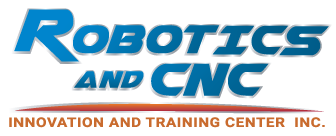There are many ways to communicate with a robot. Explicit programming is used in industrial applications. Learn all about industrial robot programming.
Robots have traditionally been used to work in industrial environments, as they constitute the most flexible existing automation technology. In the recent years, manufacturing systems are becoming more autonomous requiring less operator intervention and a higher degree of customization and reconfigurability for disparate applications. In this scenario, robot programming is a key factor toward building the applications for the factories of the future.
Industrial Robot Programming focuses on designing and building robotic manufacturing cells, and explores the capabilities of today’s industrial equipment as well as the latest computer and software technologies. Special attention is given to the input devices and systems that create efficient human-machine interfaces, and how they help non-technical personnel perform necessary programming, control, and supervision tasks.
Robotics is a subject that leaves nobody indifferent. No matter if they are used to work in industry or at our homes, mimic some of the human capabilities, or used to access dangerous environments, launched to space, or simply used to play with, robots are always a source of interest and admiration.
Actual manufacturing setups rely progressively on technology. It is common to have all sources of equipment on the shop floor commanded by industrial computers to other factory resources. Also, manufacturing systems are becoming more autonomous, requiring less operator intervention in daily operations. This is a consequence of today’s market conditions, characterized by global competition, a strong pressure for better quality at lower prices, and products defined in part by the end-user.
Industrial robots are good examples of flexible manufacturing systems. Using robots in actual manufacturing platforms is, therefore, a decision to improve flexibility and to increase the agility of the manufacturing process. If the manufacturing processes are complex, with a low cycle time, and have a lot of parameterization due to the diversity of products, then using robots is the correct decision, although it isn’t enough for a complete solution.
In fact, engineers need to learn about Industrial Robots Programming to be able to integrate other technologies with the objective of take advantage from robots the flexibility they can offer. If you need advice contact us.
